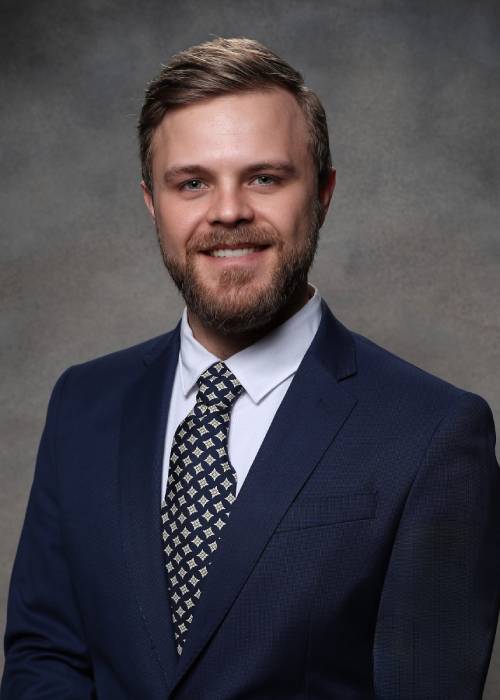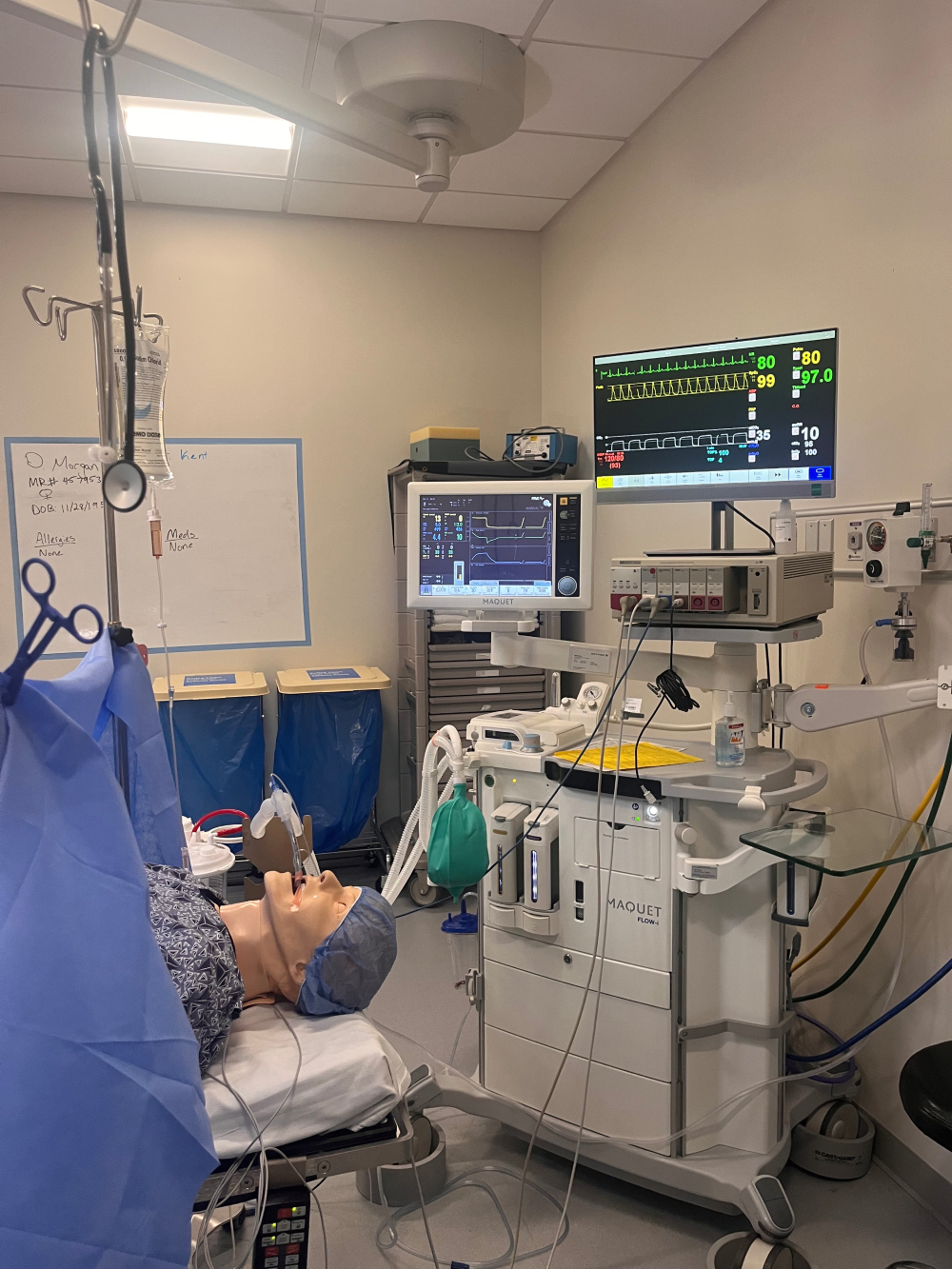Lights, cameras, simulation with VCU Department of Nurse Anesthesia’s Nick Darragh
 With dry ice, actors and earpieces, Nick Darragh makes movie magic in VCU’s Center for Research in Human Simulation, a state-of-the-art facility at the College of Health Professions.
With dry ice, actors and earpieces, Nick Darragh makes movie magic in VCU’s Center for Research in Human Simulation, a state-of-the-art facility at the College of Health Professions.
“Simulation makes you believe what you are doing is real,” said Darragh. “As soon as the student walks into the room, it’s a full-on movie set with props, actors and cameras.”
Darragh is the simulation coordinator for the Department of Nurse Anesthesia, and he designs and operates everything from simulated surgeries to emergency medical scenarios – all to train future practitioners as they work to master skills in a simulated setting. He works under Mike Kammerman, the department’s director of simulation.
“Over 25-plus years, Mike has really built this lab up to be successful and student-focused for high educational value,” Darragh said.
At VCU, registered nurses prepare to become Certified Registered Nurse Anesthetists (CRNAs) while earning a practice-oriented doctoral degree, the Doctor of Nurse Anesthesia Practice (DNAP). The program offers two tracks: an entry-to-practice DNAP for RNs entering the field, and a post-master’s DNAP designed for practicing CRNAs.
The department also offers continuing education opportunities to current CRNAs through the Nurse Anesthesiology Faculty Associates (NAFA), which offers custom training, workshops, and digital badges. Future CRNAs can log practice hours at the Center for Research in Human Simulation, performing complex simulated procedures.
Simulated emergencies in a high-tech environment
Need to simulate a tracheostomy fire or power outage during surgery? Darragh can make it happen.
The tracheostomy fire, a rare scenario where an unintended spark in the operating room can ignite a fire in a patient's airway, is one of the big events for third-year students. Darragh goes all-out to prepare.
“We’ll take steak and cauterize it, so you smell that,” said Darragh, referring to how he simulates the odor of burnt flesh to immerse students in the experience.
 Of course, he can’t tell all the tricks of his trade – then there wouldn't be any surprises left for the students.
Of course, he can’t tell all the tricks of his trade – then there wouldn't be any surprises left for the students.
“We have to keep some secrets,” he said.
Orchestrating these scenarios takes intensive preparation, from hiding materials in the simulated operating room to marking where his actors – faculty members acting as surgeons and other medical professionals – need to stand.
“We spend weeks preparing for a lab,” said Darragh.
Darragh and Kammerman oversee the whole operation from a control room adjacent to the OR, where they direct the actors during the simulation via earbuds and microphones.
At the simulation's climax, he’ll direct an actor to drop a scalpel to distract a student – in that split second, the actor will trigger the medical emergency.
“The student jumps up, and the surgeon will scream,” said Darragh, “because there’s smoke coming out of the patient’s neck.”
The smoke is pre-placed dry ice, activated by the actor during the distraction. The patient is an $80,000 SimMan 3G human patient simulator that can be programmed to cry, cough, and sweat; it can even be intubated and put on an anesthesia gas machine. Darragh and Kammerman operate SimMan, nicknamed “Fred,” from the control room.
“We want to suspend disbelief,” said Darragh. “That’s the whole Hollywood part of simulations.”
Finding a home at VCU
Darragh started his medical career as an emergency medical technician and radiation technologist in urgent care settings. But he realized patient care wasn’t his true calling and decided to switch to education, as a way of combining his interests in technology and health care. “Simulation was this really cool blend of technology, science, and health care – which I had a strong background in,” he said.
He joined VCU in January 2025 and quickly developed a passion for student success.
“They have all of these tools available to them, and once they’ve gone through all the labs, there’s nothing they can’t figure out,” said Darragh. “Seeing that growth is remarkable.”
He said that support from his department helps create ideal simulations and that student development is at the forefront of everything they do.
“We have such a strong team here with faculty and staff,” said Darragh. “There’s a shared goal to create an inclusive learning environment that contributes to student success.”
By Conor Lobb